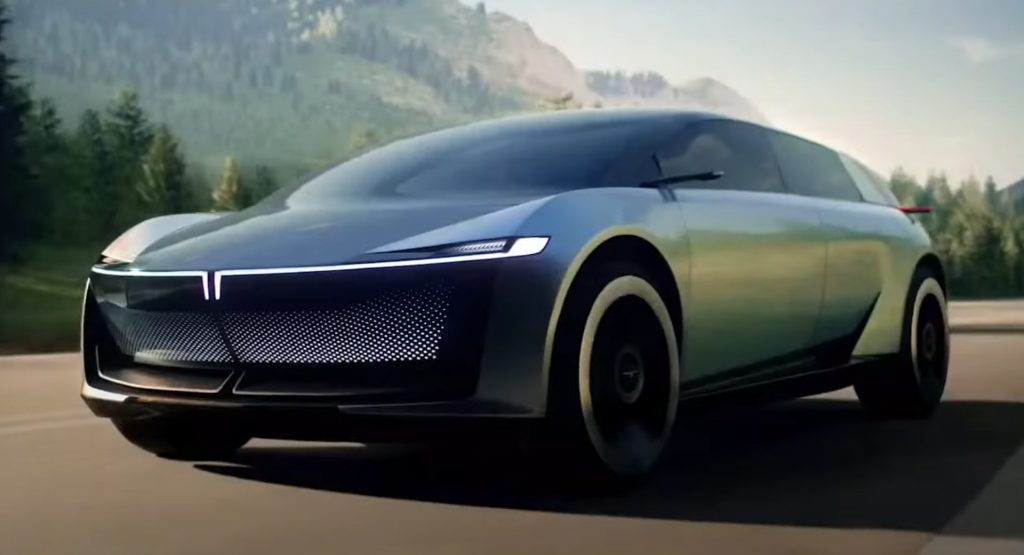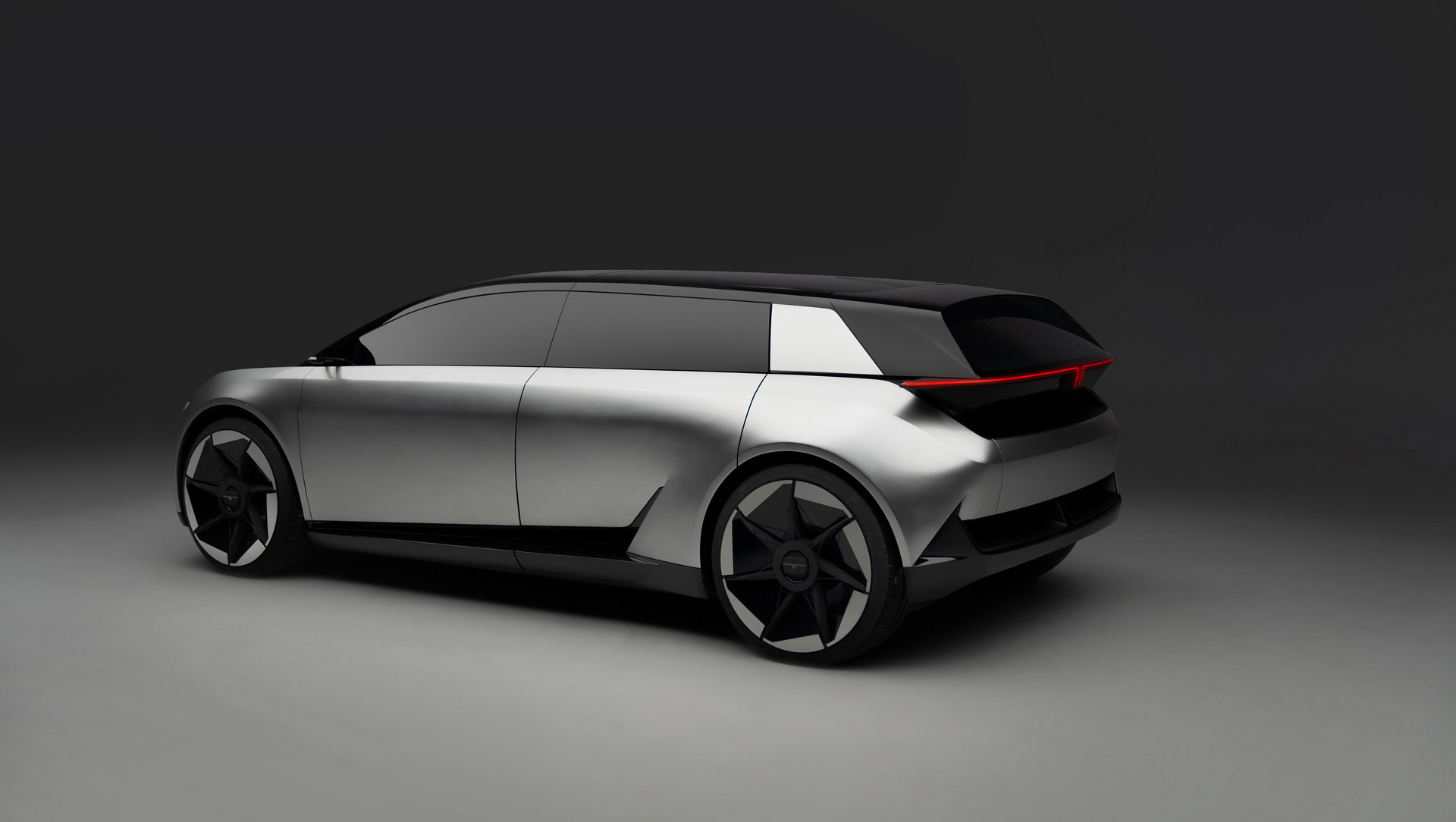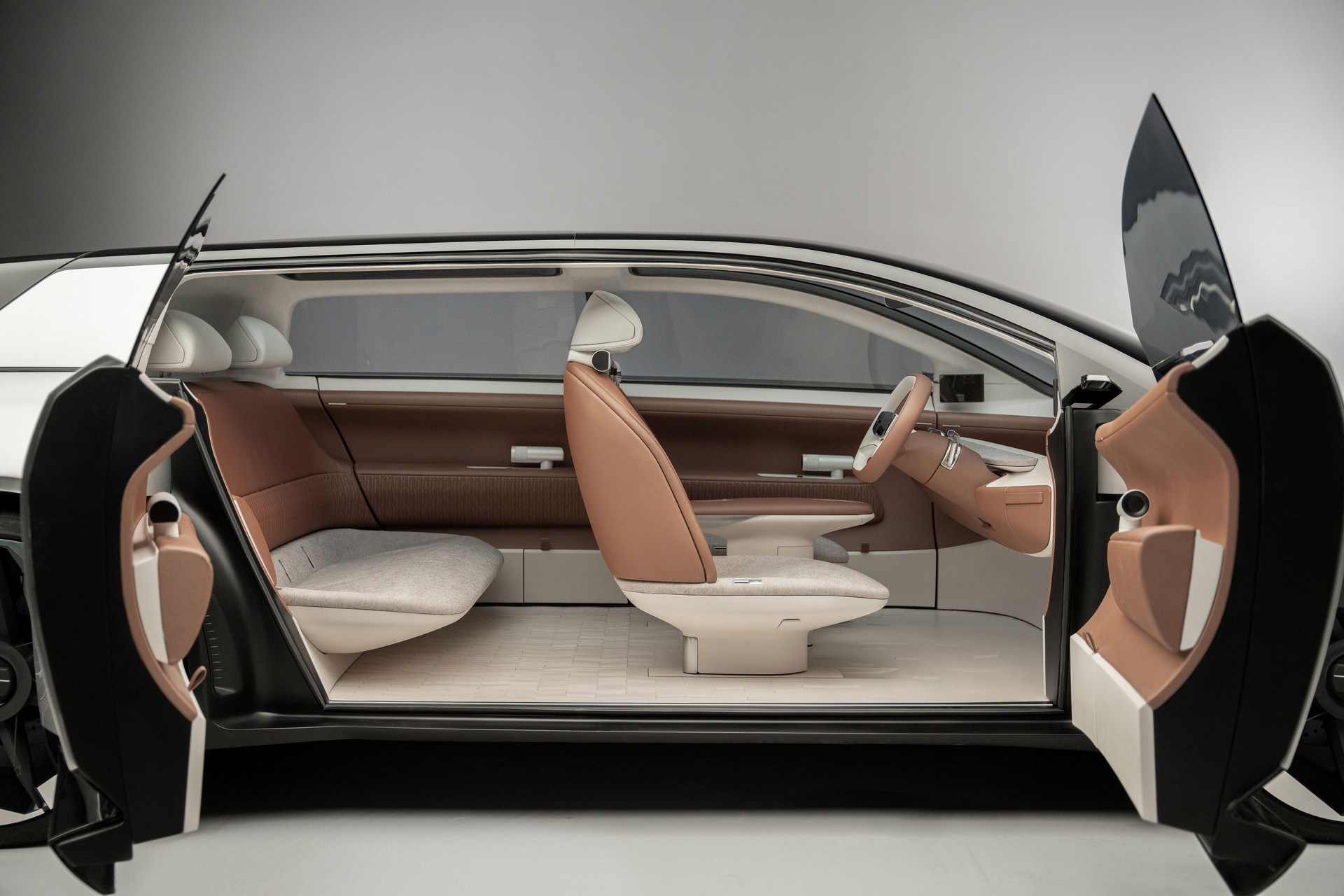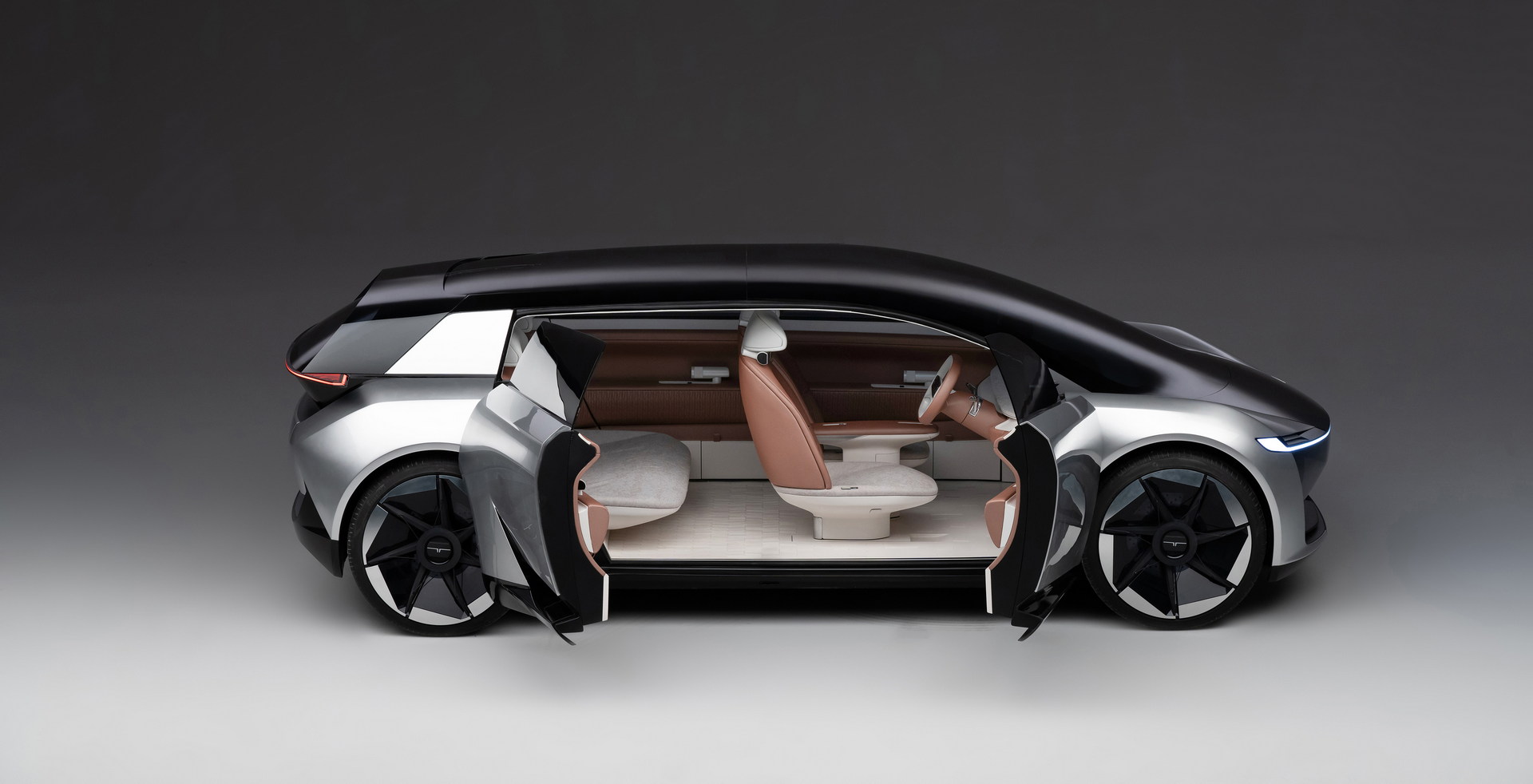Tata has unveiled the Avinya, a fully electric concept previewing a future production vehicle that will go on sale by 2025. The Avinya – which means innovation in the Sanskrit language – showcases Tata’s vision for electric mobility based on the Indian automaker’s Gen 3 architecture.
Starting with the exterior, the Avinya is described as a vehicle combining elements from SUVs, minivans, and premium hatchbacks, but its silhouette looks more like a low-slung minivan. It has a very short bonnet, a heavily angled windshield, a long wheelbase, large-diameter wheels and tiny overhangs. Simple surfacing and futuristic styling cues likely preview Tata’s future design language, as do the full-width LED bars on both ends, the illuminated grille and duo-tone treatment for the bodywork.
See Also: Tata Curvv Concept Previews A New Fully Electric Coupe-SUV
A pair of suicide doors – which the company calls Butterfly doors, open to reveal a spacious four-seater cabin with minimalist design and the use of premium and sustainable materials in warm tones. Setting aside the screens for the mirror-replacing cameras, you won’t find any displays around the cabin, since Tata’s designers wanted to minimize distractions. Instead, voice commands, artificial intelligence, and a dashboard-mounted soundbar serve as the main interface between the passengers and the vehicle’s infotainment functions.
Each seat has personalized audio and climate control systems, while the front seats can rotate for easier ingress/egress. Other features include a perfume diffuser in the centre console, and the combination of touch-sensitive and physical controls on the steering wheel.
The specifications of the electric powertrain weren’t unveiled, but we know that the Avinya is built on the upcoming Gen 3 platform. This new EV-dedicated global architecture that’s developed in India will bring next-generation connectivity and ADAS, alongside enhanced performance and efficiency.
Tata claims that the battery will be able to offer a minimum of 500 km (311 miles) of range with just 30 minutes of charging. We also expect the platform to offer all-wheel-drive capability since Tata says it is suitable for all forms of terrains coming with the next level of waterproofing and dust protection. Finally, it will make good use of lightweight materials and have high levels of stiffness.
The Gen 3 platform is set to underpin a range of “globally competitive EVs”, starting with the – likely toned-down – production version of the Avinya which will reach the market by 2025. Before that, Tata will already have launched eight new EVs based on other architectures.



















